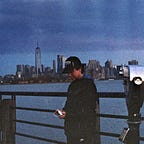The Assassination Attempt of 40th President Ronald Reagan
How the President was able to escape death.
On March 30, 1981, the United States was thrust into a state of shock and disbelief when President Ronald Reagan became the target of an assassination attempt. The events of that fateful day forever altered the course of history and underscored the vulnerability of even the most powerful figures. Reagan’s remarkable recovery from the near-fatal attack served as a testament to his resilience and the strength of the nation’s institutions.
The Day That Shook the Nation
It was a sunny morning outside the Washington Hilton Hotel when President Ronald Reagan stepped out of the entrance, greeted by a crowd of well-wishers and reporters. Among them was John Hinckley Jr., a troubled young man with a disturbing infatuation for actress Jodie Foster. Unbeknownst to the president and those around him, Hinckley had a sinister plan brewing.
The Assassination Attempt
As President Reagan walked towards his waiting limousine, Hinckley fired six shots from a .22 caliber revolver. The first bullet struck White House Press Secretary James Brady in the head, seriously injuring him. Another hit a police officer, Thomas Delahanty, in the neck, and a third struck…
